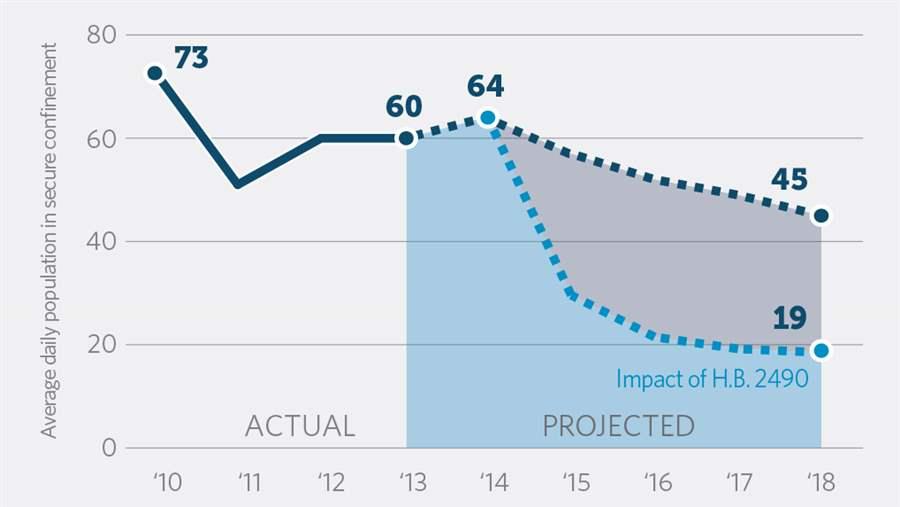Hawaii’s 2014 Juvenile Justice Reform
New Law Will Strengthen Community Supervision and Reduce Secure Confinement
Overview
Facing high costs and poor outcomes from its juvenile commitment policies, Hawaii enacted House Bill 2490, based on the comprehensive recommendations of the Hawaii Juvenile Justice Working Group. The law will reduce secure confinement, strengthen community supervision, and focus resources on practices proved to reduce recidivism. The reforms are projected to cut the number of youth held in the state’s secure facility by more than half over the next five years, allowing for reinvestment in proven interventions.
Highlights
Problem
For 2013, the average annual cost of a bed at the Hawaii Youth Correctional Facility (HYCF) was $199,320, even as 3 in 4 youth released were re-adjudicated as delinquent or convicted as adults of new crimes within three years of release. Additionally, 41 percent of commitments in 2013 were for probation violations or revocations, reflecting the lack of alternatives and underscoring the need to strengthen community supervision.
Findings
The working group’s comprehensive review of Hawaii’s data found that while commitments declined 41 percent from 2004 to 2013, the average length of stay was 188 percent longer by 2013. At the same time, a growing proportion of juveniles committed for new offenses were adjudicated for misdemeanors (61 percent in 2013, up from 47 percent in 2004), and slightly less than half of all those committed had no prior felony records. The working group discovered that many areas of the state lacked effective community-based alternatives, leaving judges with few options to hold youth accountable and provide them with necessary services.
Reforms
The working group developed recommendations to reduce the use of secure confinement, increase proven community-based options, and strengthen probation supervision. H.B. 2490, which contained these recommendations, passed with unanimous support from the Legislature and was signed into law by Governor Neil Abercrombie on July 2, 2014.
Impact
The law is projected to reduce the population in HYCF by 60 percent, enable the closure of two facilities on the HYCF campus, and produce savings of $11 million in the facility’s budget by 2019. It redirects the savings into effective community-based alternatives, and it also provides an upfront investment of $1.26 million for mental health and substance abuse treatment, delinquency interventions, and implementation of the reforms.
Figure 1

Reforms Projected to Cut Committed Population
Alternatives will reduce youth population in the secure facility by 60%.
Sources: Office of Youth Services (historical data); The Pew Charitable Trusts (projections).






